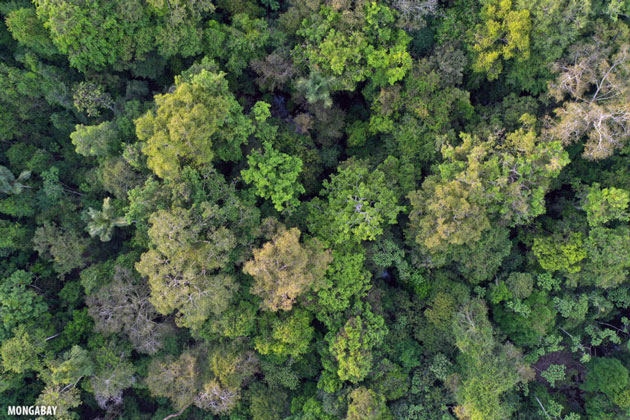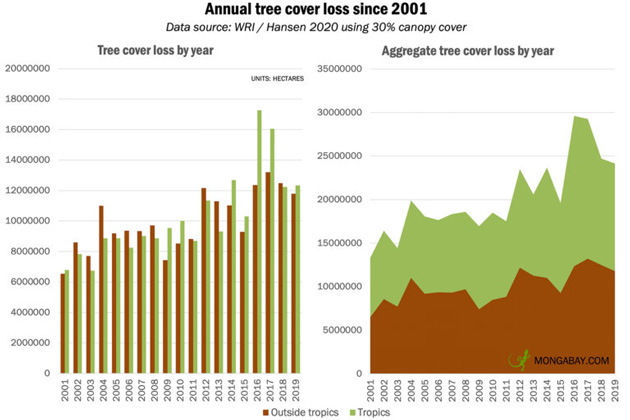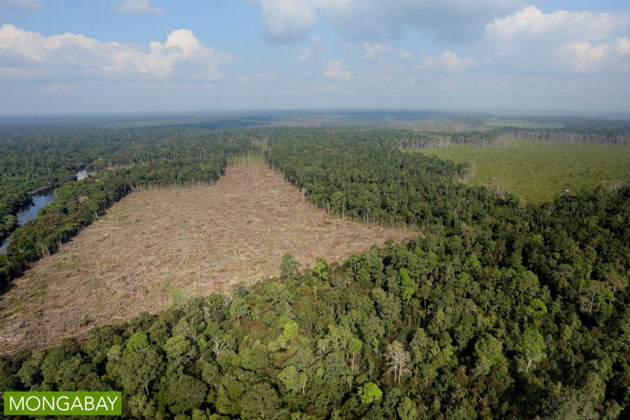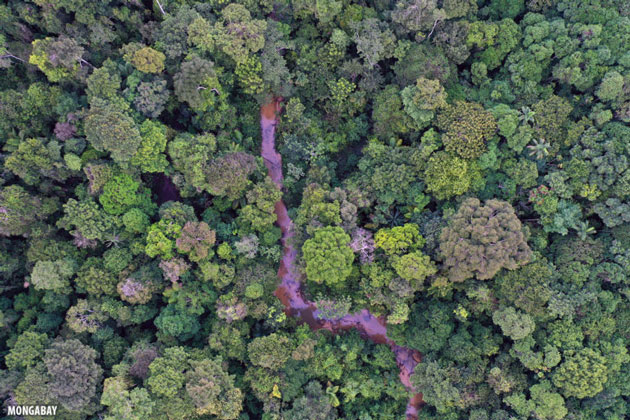Companies must account for quality, not just quantity, when it comes to forests (commentary)

- With the explosion of net-zero commitments as a part of corporate sustainability plans, forests are having a moment in the spotlight. More and more companies are beginning to recognize the value of intact forests in reaching net-zero emissions.
- However, new research shows that despite these commitments, forests are still dwindling, with devastating effects on the climate, ecosystem services, and biodiversity.
- In the opinion piece, the authors Dr. Julie Nash at Ceres and Dr. Jamison Ervin at UNDP, make the business case for preserving intact forests. They outline the importance of forests beyond their use as carbon offsets, and call for investors to assess the quantity and quality of forest commitments in corporate sustainability plans.
- This post is a commentary. The views expressed are those of the author, not necessarily Mongabay.
The launch of the New York Declaration on Forests (NYDF) in 2014, with the support of nearly 200 corporate, government, NGO and Indigenous peoples and local community endorsers, put forests at the forefront of climate action and sustainable development. The launch event triggered a flurry of corporate pledges to tackle deforestation in company supply chains. However, as a recent assessment of NYDF progress has shown, large swaths of intact forests continue to be converted for consumer products with significant consequences for the climate, local ecosystem services, and biodiversity. When it comes to forests, companies need to consider not only the quantity of hectares of forest cover but also the quality of natural forest areas left standing.

The climate consequences of losing large intact forest landscapes
Commodity supply chains, especially for soy, palm oil, beef and timber, continue to drive forest loss which is associated with five percent of all global emissions. Of particularly grave consequence for our climate is the loss of intact forests, large, unbroken swaths of primary forests that are free of significant anthropogenic damage. Intact mangrove forests, tropical forests and forested peatlands sequester more carbon than any other type of forest. Intact forests in particular account for nearly one-third of all carbon stored in trees and absorb one-fifth of human-caused emissions every year, despite making up just 13% of the world’s total forest area.

While about half of the world’s humid tropical forests can still be considered of “high quality,” less than a quarter of forests worldwide are considered intact. However, only 6.5% of these high quality, intact tropical forests are formally protected, putting them at significant risk of being lost, according to a recent study. By one estimate, intact forests are being damaged at twice the rate of forests overall, including from logging and land clearance for industrial agriculture.
Because protecting intact forests has a climate impact six times greater than previously thought, some researchers wonder whether the financial incentive to preserve them, and the penalties for destroying them, should be substantially higher. Furthermore, because the impact of intact forests on carbon sequestration is largely under-reported, the loss of intact forests is likely accelerating more quickly than we know.
Additional benefits of intact forests
In addition to the forest’s role in storing carbon, companies need to consider the vital role intact forests play in other sustainable development goals. These forest areas are key to local, national and regional water security. For example, scientists believe that the Amazon rainforest generates rainfall that supports agriculture across much of Latin America and the US. Moreover, one-third of the world’s cities get all or part of their drinking water from forest protected areas, including Bogotá, Jakarta, Madrid, Mumbai, New York, and Singapore. Intact forests are critical in sustaining livelihoods – about 90% of people in extreme poverty globally are dependent on forests for at least part of their livelihoods. Natural forest areas are also key to maintaining the world’s biodiversity – about 80% of the world’s terrestrial biodiversity is found in forests. Biological diversity suffers when forests become fragmented, so maintaining intact primary forests is key to maintaining resilience in human and natural ecosystems.
Investors’ role in advocating for company commitments to forests
As concerns stemming from the climate crisis take center stage and the consequences of biodiversity loss become clearer, investors are increasingly placing pressure on companies to get serious about addressing their impacts on forests. Institutional investors, including pension funds and asset managers, recognize that forest and land conversion poses economic, financial and reputational risks. With resources like the Ceres Investor Guide to Deforestation and Climate Change, these investors have clear guidance on both assessing forest risks at the portfolio and security levels and engaging companies on mitigating forest risks.

In an effort to minimize their exposure and to contribute to meeting the goals of the Paris Agreement, investors are participating in initiatives such as Climate Action 100+ to engage with multinational companies on ways to cut their carbon footprints. Investors expect these companies to set ambitious emissions reductions targets that incorporate: eliminating emissions from deforestation; enacting a climate action plan with implementation strategies that address forest and land conversion; and providing annual public disclosures of quantitative progress on reducing GHG emissions, including forest- and land-related emissions.
While many companies across multiple sectors, including construction, oil and gas, technology, food and beverages, have recently increased their ambition by announcing net-zero carbon commitments, most of these commitments involve offsetting some carbon emissions. Just as they have engaged on GHG emissions reduction, investors are poised to engage with companies on their net zero commitments. They will expect companies to outline their plans for both protecting forests in their wider supply chain and ensuring the forest integrity for their carbon offsets. By understanding both elements in company net-zero plans, investors can assess the quantity and quality of forest commitments.

A critical decade ahead – time for bold commitment and bold action
Halting deforestation, especially in the richest forest ecosystems, will require action from many actors. To ensure that companies address forest-related risks and opportunities, investors will continue to push for stronger corporate policies on deforestation covering the supply chain and forest integrity for their carbon offsets. Investors will encourage business leaders to make explicit commitments ensuring that forests—our most valuable natural assets in the transformation to a sustainable future—remain standing.
Dr. Jamison Ervin is manager of the Global Programme on Nature for Development at UNDP. Dr. Julie Nash is the director of the food and forests program at Ceres.
This article first appeared on Mongabay.







